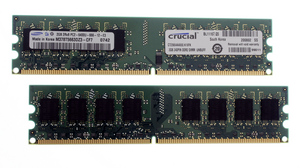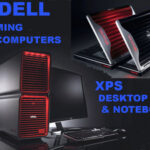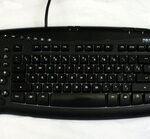How much memory does Windows Vista need?
Is there such a thing as too much memory for my computer?
Do all those different types of memory make a difference for general computer use and gaming?
I searched for answers to these and some other questions that I had about computer memory and found some answers but many are not the ones I was really looking for. Yes, there are answers out there but for me the proof is in the pudding, or on the screen.
I wanted to find out just what the deal is with those expensive memory sticks you can buy, matched memory, and see how they work for gaming. I also wanted to find out what the lowest amount of memory you could use in Windows Vista and still be able to game and such.
Some answers are not going to surprise any of the really intense gamers but they know more about their own computers and how memory works. I wanted to see for the regular computer users how memory on the newest operating system affects the general gaming and computer use.
I tested several memory sticks and configurations in my system and found some interesting and probably not surprising results. I want to go over them and show in clear language and no confusing jargon what the result will mean.
One thing I was really confused when starting this project and I still do not have a real full grasp of is the use of lots of memory and things like timings and matched memory. I understand some of it but I really don’t need to, I want to see results and find out what all the stuff really means to real world situations like gaming and image editing.
I wanted results and found out some interesting things about memory and those fancy heat sink laden matched pairs that will probably raise some doubts in the minds of some gamers. But for those who don’t do the extreme gaming with really great computers these are the results I kind of expected.
I tested several different memory configurations and amounts of memory and the biggest findings I saw were the amount of memory where Windows starts to go downhill and the amount of memory over this point doesn’t do very much. I found that on my system and for not only general gaming but for benchmark tests like Futuremark’s PCMark 05 and Vantage that Vista doesn’t like less than 2 gigabytes of memory.
Windows Vista can run with less than 2 gigabytes of memory but it starts to get less spry and runs slower so I think I can safely say that this is a figure you should be shooting for if you want to get Windows Vista. If you have less than 2 GB you might want to get more but for those with 2 gigabytes and general gaming or computer use 2 GB is more than sufficient.
I then went over that figure and started installing more memory and running tests to see how much would make performance increase with more than 2 gigabytes. I used several different kinds of memory but for the most part I received the memory from Crucial, a division of Micron Technology but also from US Modular.
I do like Crucial memory not because they have supplied me with memory, okay that too, but they have some very nice help sections for choosing memory as well as just low priced memory in general. The same company sells Lexar brand products and I also have several of them that I have purchased over the years and been very happy with.
I have four different products from Crucial memory and used them all in this testing with very good results. I also used some other memory modules from US Modular but six gigabytes of memory modules I used for testing all came from Crucial. I have a set of matched 1 GB Crucial Ballistix Tracer modules, a matched set of 512 MB and 2 GB memory modules and a 1 gigabyte module. I also have a matched 1 GB set from US Modular that I used in testing.
First I wanted to see how low and high I could go in memory with my system which is:
AMD Athlon 64 X2 6000+ CPU
Elite Group Systems KA3 MVP Motherboard
Western Digital 200 GB Hard Disk Drive
Apevia Iceberg 680 watt Power Supply
Visiontek HD2600 XT Graphics Card
I wanted to perform this set of tests on a system that many of you may have or have one like it. This computer is a setup that I have put together from a bought computer but with parts that I have reviewed but which is very similar to many other computers you can purchase. Its system specifications are very similar to others and not on the high end of a gaming computer that many people may have.
The first thing I did was tested my computer with 512 megabytes, 1 gigabyte, 2 gigabyte, 3 gigabyte, 4 gigabyte and 6 gigabytes of memory. The testing for 2 to 6 gigabytes of memory all showed pretty much the same results for tests like Futuremark’s PCMark 05 and Vantage. Of course the memory tests showed higher for the test that actually tested for memory only and the things that more memory would affect did a little better but not all that much.
The tests showed me that memory does have an effect on memory tests but it does not do much in the overall scheme of things when it comes to gaming. I tested all the memory setups on several games; Company of Heroes, Call of Duty 4 Modern Warfare, Unreal Tournament 3 and Microsoft Flight Simulator X.
Yes, the games may run a bit different and things may run a bit better with better memory but the frame rates that the games have will not change much for all the various amounts of memory I tried. For instance, I ran Microsoft Flight Simulator X and checked frame rates with a program that records the frame rates called FRAPS.
I was getting frame rates of 18 and 19 average frames per second while just flying around in the same plane and area using memory from 2 to 6 gigabytes. Using the various kinds like 4 gigabytes of two matched sets, two 1 gigabyte US Modular Cold Fusion and two 1 gigabyte Crucial Ballistix Tracer did the same as the two 2 gigabytes of Crucial regular memory modules.
When I used 1 gigabyte of memory the frame rates went down to 13 to 14 frames per second in Flight Sim X and the game was playable but noticeably slower. If you go lower than 1 GB you can throw playable out the window though at high settings, with 512 MB of memory Flight Sim X is slow. This was with maximum settings for quality and scenery but you can lower the settings and make the game playable with 512 MB of memory.
Other games handled about the same with good frame rates above 2 gigabytes but when you played at highest settings with 1 gigabyte of memory frame rates would lower. The games are playable with 512 MB of memory but you do have to lower the quality settings and not use some of the more advances settings like anti aliasing or anisotropic filtering.
For Call of Duty 4 I had frame rates around 100 for 1024 x 768 screen resolution with no anti aliasing and trilinear filtering but when I dropped to one gigabyte it went down to 57 FPS and then down to 30 FPS with 512 MB. The anti aliasing and filtering is just a term used for some settings that allow for better distance viewing and quality at those further distances. The images at a longer distance from the point of view will be better with these settings turned on, but they also take up more computer resources.
The other games all turned out to be about the same but even when I used more than 2 gigabytes of memory the games did not improve in frame rates but did seem a bit smoother. The real improvement of memory over 2 gigabytes was not in gaming but in image resolution and loading times in Photoshop CS3 and website loading in Dreamweaver CS3.
I recently received Dreamweaver CS3 for reviewing and have been using it to create my own website, jeffsreviews dot com, and found that memory has some effect on loading the pages onto the program or onto the server for my website. The load times are much faster with more memory but it is hard to tell if it is any faster using from 4 to 6 gigabytes of memory.
Image loading into Photoshop CS3 and rendering or processing images is much faster when you have more memory and using the program with less than 2 gigabytes is all but impossible. Dreamweaver CS3 is also very slow in loading websites or processing the pages when you update things so you should really use 2 GB or even more for these types of programs.
I also compared three setups of the various kinds of memory and found that with general gaming the amount matters more than the type or matched pairs and single modules. This is not to say that matched pairs does not help your computer run better to some extent but for general gaming it really doesn’t matter that much.
I tested and compared the two Modular 1 GB modules against the two Crucial Ballistix Tracer 1 GB modules with a single 2 GB Crucial module and found all three setups ran about the same frame rates in games. I also compared both the matched pairs of US Modular and Ballistix Tracer modules against the two 2 GB Crucial modules and saw about the same frame rates in the games and scores for the benchmarks.
I know that using the matched pairs of memory modules do work better for your computer in theory but in actual practice it really doesn’t show up much in general gaming. If you do not overclock your computer or are trying to get every single frame rate better that you can it just doesn’t matter that much.
Once you get above 2 gigabytes of memory in Windows Vista you are about leveling out your system improvement for gaming and frame rates in general. Games will work a little better with more memory for things like loading times and texture quality but for general speed of games it does not make much of an improvement.
In programs like Dreamweaver and Photoshop more memory does make a big difference in load times and handling of images and files. Dreamweaver will load website pages and images much faster with more memory and Photoshop will handle all its operations faster as well. I really cannot be sure how much faster because there is really no way other than to sit and time the loading or rendering which is not very accurate but the times do go down when you have more memory.
How much more over 4 gigabytes is another matter, I installed 4 then 6 gigabytes and could not be sure if the times were faster or not but it did seem like it handled things better with 6 gigabytes. I really cannot be sure of this as the 32 bit Windows is supposed to be kind of maxed out at 4 gigabytes of memory due to the nature of the programs design. I know that 4 gigabytes is much better than 2 gigabytes when it comes to rendering images and handling files so for Windows Vista 4 gigabytes is better if you do a lot of image processing or web site work.
So my conclusions for all this testing and Windows Vista is really simple, for games 2 gigabytes is as good as 4 or 6 gigabytes of memory and the kinds don’t really matter much if you have a middle of the road computer. For regular gaming and web browsing and word processing 2 gigabytes of memory is more than sufficient in Vista. Don’t worry so much about purchasing more than 2 GB of memory for general gaming and look to better graphics cards.
For website handling and image editing like Photoshop CS3 and Dreamweaver CS3 4 gigabytes is a minimum for really getting the most out of the programs. Dreamweaver and Photoshop have a lot of CPU and memory usage and the more you have handy the better the programs work.
I would like to thank both Crucial and US Modular for their support of my reviews and their products they have given for reviews as well as Adobe for their Dreamweaver CS3 and Photoshop CS3 programs.





